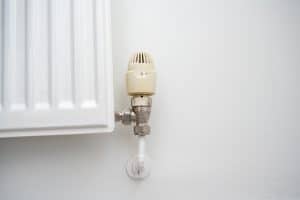Power flushing is an essential part of central heating maintenance, but what does it actually do? Find out more in this article!
No matter how well you take care of your home’s central heating system, it’s bound to become clogged with limescale, rust, and sludge over time.
If you leave these buildups to fester, it can lead to a myriad of problems – like reduced life expectancy, inefficient and inconsistent heating, and even higher energy bills. Which, in the current climate, isn’t ideal.
Regular power flushing will help you to avoid all of these issues (and more!), so you should really think about making this a part of your boiler maintenance routine.
But what exactly does a power flush do?
Here, our plumbing and heating experts explain the purpose of a power flush and how the process works!
Why is regular power flushing so important?
A power flush is a standard process, used to remove build-ups of rust and debris from your home’s central heating system – leaving your boiler, pipes, and radiators clean for maximum heating efficiency.
If you neglect this aspect of maintenance, your radiators will struggle and take much longer to heat up your home than usual. With your boiler needing to work much harder, you may notice the price of your energy bills shooting up, too.
How does power flushing work?
There are a few different steps involved in the power flush process.
First, an engineer will attach a powerful pump to your central heating system – either to the pump head or circulation pump, depending on the type of boiler you have.
The pump flushes a cocktail of cleaning chemicals, at a high flow but low pressure, to allow them to circulate throughout the heating system and flush away the debris that’s built up over time.
The contaminated water collected is then removed and disposed of properly by the engineer.
Power flushing is a lengthy, complicated process, and can take anywhere between 6-10 hours depending on the age of your system and the extent of the blockage.
You shouldn’t attempt to perform a power flush yourself, and should always consult a licenced, fully qualified engineer.
How often does my central heating need to be power flushed?
Boilers younger than 3 years old generally don’t need to be power flushed, but systems older than this should be booked in for a power flush every 5-6 years to dislodge any debris that has built up within the pipes.
You might be able to get away with going up to 10 years between power flushes, but this depends on the type of system you have, the quality of the materials used, and how well you take care of it.
If you can’t remember the last time you power flushed your central heating system, don’t worry! There are a few red flags you can keep an eye out for to tell you it’s time.
Some of these include:
- Radiators taking longer than usual to heat up
- Radiators producing discoloured water when you bleed them
- Unusual noises coming from your boiler (banging, rattling, etc.)
- Cold spots on your radiators.
Book your next power flush with the plumbing and heating experts at Powerflush Geek
Whether the time for your next power flush is fast approaching or it’s long overdue, our experts here at Powerflush Geek would be more than happy to help.
We’ve been performing power flushes all around the North West for many years, and have all the necessary qualifications under our belts, so you can trust that your central heating system is in the best hands.
To book an appointment with us, or to find out more about how our engineers can help, give us a call today on 07444 203 403 or email us at info@powerflush-geek.co.uk and we’ll get back to you shortly.






